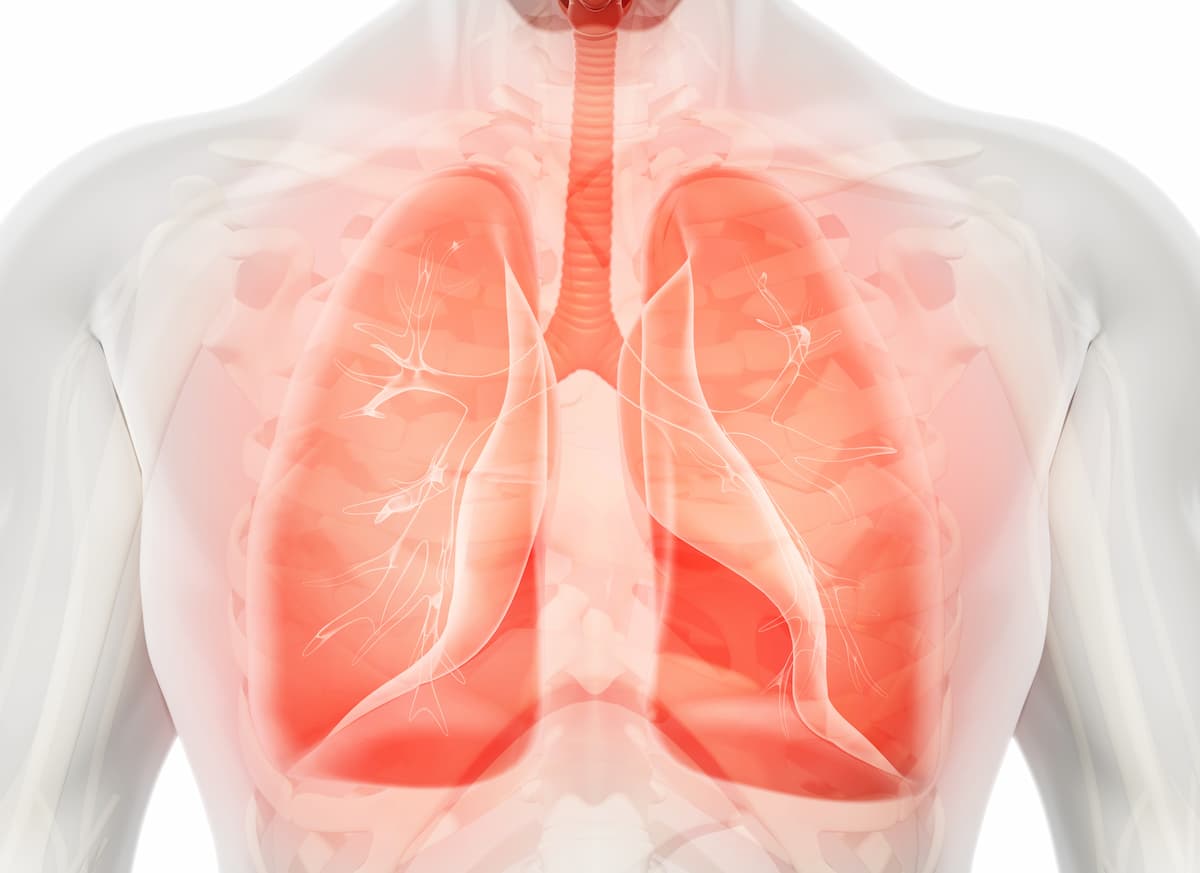VGT-309 Helps Visualize Tumors During Robotic-Assisted Lung Cancer Surgery
Results from a phase 2 trial support the safety and tolerability of VGT-309 in patients with suspected lung cancer who undergo standard-of-care surgical resection.
"Minimally invasive surgery has become standard of care for many cancer surgeries, but surgeons’ ability to see and remove all tumor tissue during these procedures is often hindered by poor visualization. The data from the VGT-309 phase 2 efficacy study [NCT05400226] are encouraging, reinforcing the agent’s potential to help fill this critical gap," according to Sunil Singhal, MD.

The investigational tumor-targeted fluorescent imaging agent VGT-309 assisted surgeons in detecting primary and metastatic tumor tissue that is difficult to find in the lung during surgery, according to a press release on findings from a phase 2 study (NCT05400226).1
According to results presented at the 60th Annual Meeting of The Society of Thoracic Surgeons, the novel agent demonstrated an ability to help surgeons find previously undetected tumors in real time during minimally invasive and robotic-assisted lung cancer surgery. Among 40 evaluable patients who received VGT-309 plus standard surgical resection for suspected lung cancer, 1 or more clinically significant events were reported in 42.5% (n = 17).
When administered in combination with the use of a near-infrared (NIR) endoscope for assessing the extent of tumor tissue, VGT-309 helped visualize primary and metastatic tumor types such as adenocarcinoma in situ, invasive adenocarcinoma, lymphoma, colorectal cancer, neuroendocrine tumors, sarcomas, and squamous cell carcinoma. Additionally, investigators highlighted that the experimental agent was safe and tolerable, as no infusion reactions or treatment-related serious adverse effects occurred.
“Minimally invasive surgery has become standard of care for many cancer surgeries, but surgeons’ ability to see and remove all tumor tissue during these procedures is often hindered by poor visualization,” lead investigator Sunil Singhal, MD, lead investigator and chief of the Division of Thoracic Surgery in the Perelman School of Medicine at the University of Pennsylvania, said in the press release.1 “The data from the VGT-309 phase 2 efficacy study are encouraging, reinforcing the agent’s potential to help fill this critical gap.”
Investigators of the phase 2 study assessed the extent to which intraoperative molecular imaging with VGT-309 improved surgical outcomes among 40 patients who were suitable to receive surgery for suspected or proven lung cancer. Patients received VGT-309 intravenously at 0.32 mg/kg 12 to 36 hours prior to surgery.
The study’s primary efficacy end point was the incidence of clinically significant events, which were defined as localization of lesions not detected via standard surgical strategies, detection of occult and synchronous cancers, and inadequate surgical margins. The sensitivity, specificity, positive predictive value, and negative predictive value of VGT-309 was a secondary end point.
Patients 18 to 85 years old with a lung nodule or mass suspected to be primary lung cancer or lung metastases who were scheduled to undergo standard surgical resection for said nodule or mass were able to enroll on the study. Additional eligibility criteria included having adequate kidney and liver functions at baseline, an ECOG performance status of 0 to 2, and meeting all standard surgical and general anesthesia requirements. Those with any other comorbidity that may have interfered with the ability to comply with study protocol were unable to enroll.
“We look forward to the results from our ongoing, phase 2 multi-center VISUALIZE study, which will provide further insight regarding the potential promising impact of VGT-309 for both cancer patients and surgeons,” John Santini, PhD, president and chief executive officer at Vergent Bioscience, said.1
Developers announced that they received a Small Business Innovation Research (SBIR) grant of approximately $2 million from the National Cancer Institute (NCI) in November 2022.2 The grant supported the phase 2 study assessing the intraoperative imaging capabilities of VGT-309 in lung cancer surgery.
“This phase 2 SBIR award further validates the promise of VGT-309 to help surgeons realize the full potential of minimally invasive and robotic-assisted surgical procedures by improving the visibility of tumors during surgery. We are grateful to the NCI for their support and to the team at the University of Pennsylvania’s Perelman School of Medicine for conducting this phase 2 study,” Santini said in a press release at the time of receiving the grant.2
References
- Vergent Bioscience presents phase 2 data showing VGT-309 visualizes tumors in the lung during surgery. News release. Vergent Bioscience. January 28, 2024. Accessed February 14, 2024. http://tinyurl.com/278f32yu
- Vergent Bioscience awarded National Cancer Institute phase 2 grant to advance clinical development of VGT-309 in lung cancer. News release. Vergent Bioscience. November 29, 2022. Accessed February 14, 2024. http://tinyurl.com/rzndhhpx